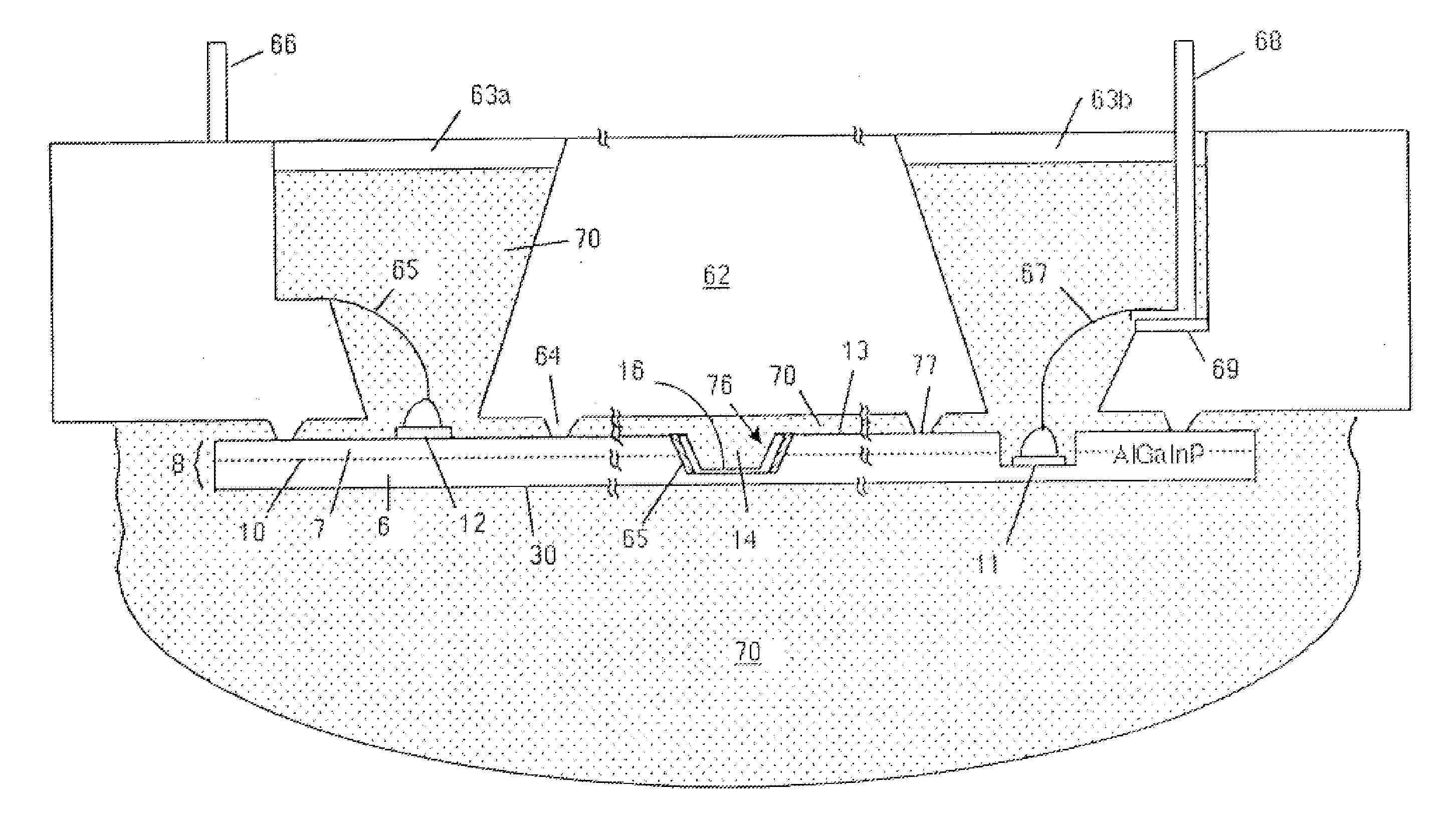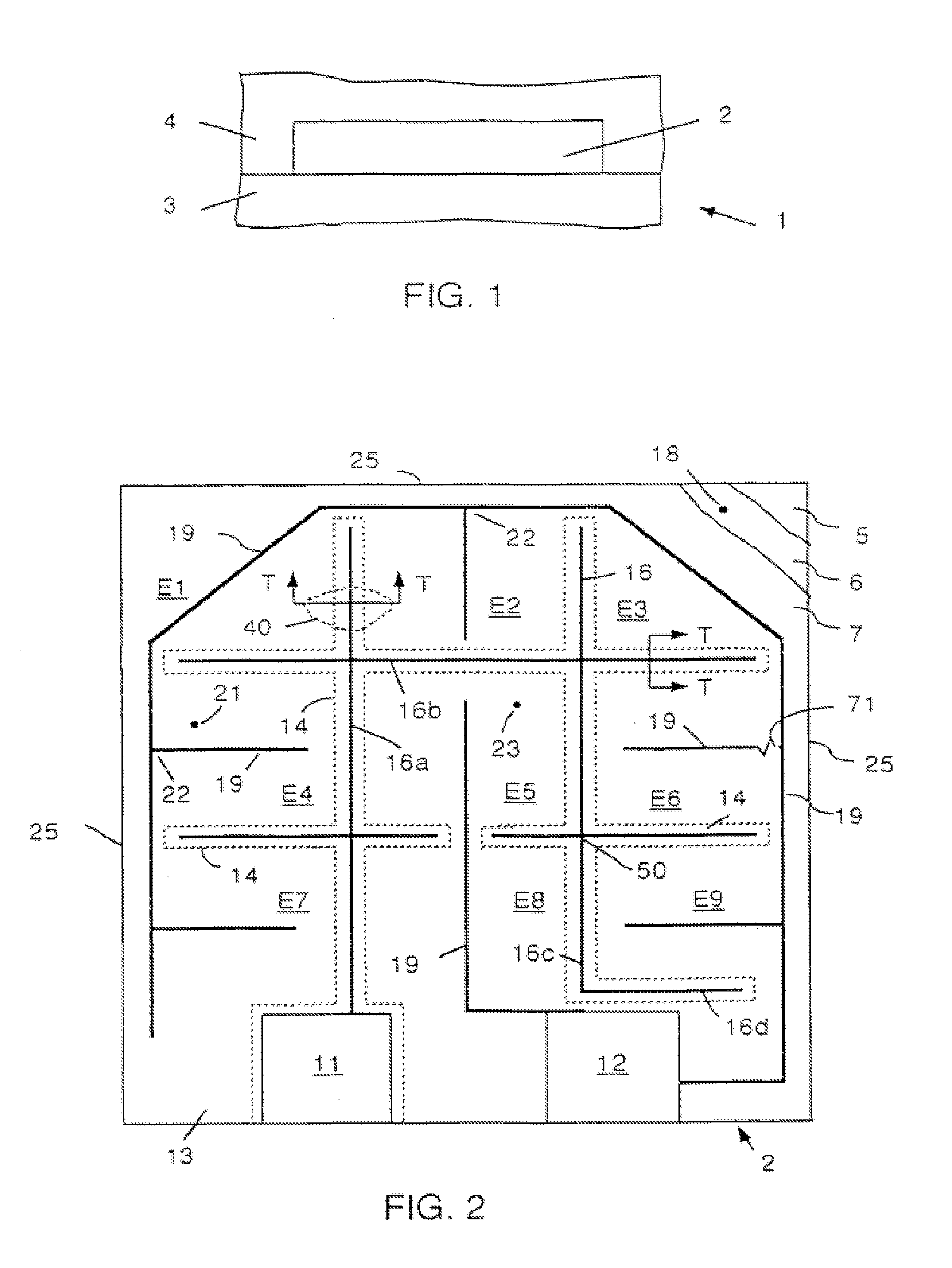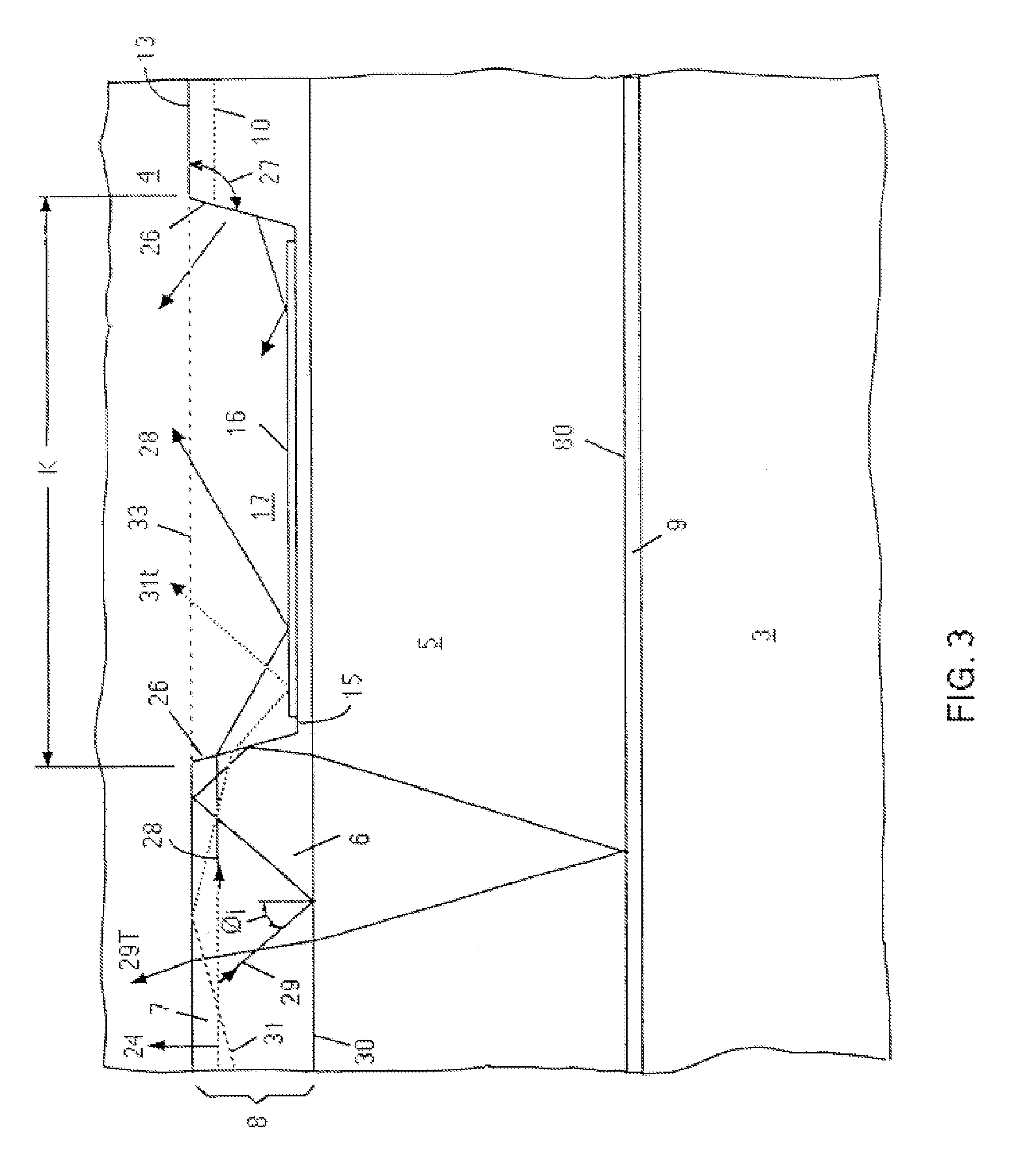LED lamps
a led lamp and led light technology, applied in the field of colored and white led lamps, can solve the problems of reducing the use of single-chip led lamps, affecting the efficiency of led traffic lights, and requiring many led lamps to provide single led traffic lights, so as to avoid or reduce the need for clustering
- Summary
- Abstract
- Description
- Claims
- Application Information
AI Technical Summary
Benefits of technology
Problems solved by technology
Method used
Image
Examples
Embodiment Construction
[0058]FIGS. 1-3 illustrate an improved LED light source according to an embodiment of the invention. Light source 1 comprises an LED chip 2 mounted on a metal support 3 which may be part of a reflective bowl the floor of which acts as a heat sink. Over chip 2 there is a cover 4 of transparent dielectric material. FIG. 3 is a sectional view taken along T-T of a portion 40 of chip 2.
[0059]Chip 2 comprises a transparent base 5 over which is formed a layer 6 of n-type semiconductor material. A layer 7 of p-type semiconductor material is formed over n-layer 6. Each of semiconductor layers 6, 7 can be less than 5 microns thick. Semiconductor layers 6, 7 are referred to collectively as semiconductor 8. Each of the basic n, p layers 6, 7 may include supplementary layers, not shown, that enhance the performance of the chip, or that simplify its manufacture. For example, p-layer 7 may include a thin light-passing gold layer on top of it to, in effect, enhance the electrical conductivity of th...
PUM
 Login to View More
Login to View More Abstract
Description
Claims
Application Information
 Login to View More
Login to View More - R&D
- Intellectual Property
- Life Sciences
- Materials
- Tech Scout
- Unparalleled Data Quality
- Higher Quality Content
- 60% Fewer Hallucinations
Browse by: Latest US Patents, China's latest patents, Technical Efficacy Thesaurus, Application Domain, Technology Topic, Popular Technical Reports.
© 2025 PatSnap. All rights reserved.Legal|Privacy policy|Modern Slavery Act Transparency Statement|Sitemap|About US| Contact US: help@patsnap.com



